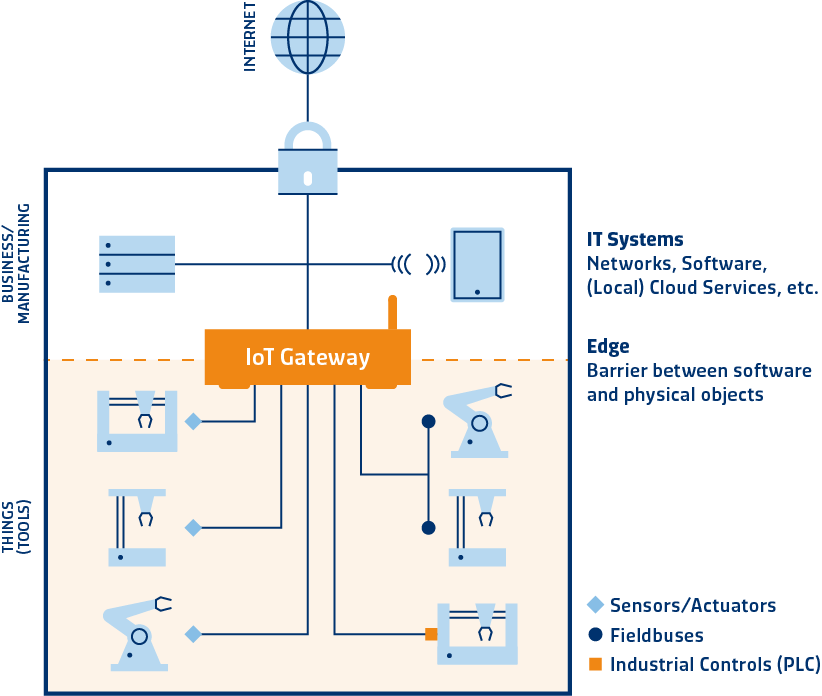Overcome Barriers and Unify Interfaces
IoT Gateway combines the technologies of automation and IT. The gateway uses Industrial Internet of Things (IIoT) technology which includes connected sensors and actuators to integrate field data and make these available via manufacturer-independent standard interfaces such as OPC UA or MQTT. An IoT Gateway is also a platform for data preprocessing and analysis. As a result, not all data must be transmitted, only the information extracted from it.

Key Benefits
Benefits
Direct IoT field communication with sensors, actuators, established fieldbuses and PLCs as well as unified interfaces to IT systems.
Fast and flexible integration of machines in Industry 4.0 applications, even for existing systems previously unavailable for integration.
Standardized and secure information flow between production (OT) and IT applications in the corporate network (IT) as well as in the cloud (CT).
Edge Computing: The computing power moves closer to the equipment. The IoT Gateway is a customizable platform for data preprocessing, storage, and analysis that reduces response times and traffic requirements.
Wide range of applications including alarm and event generation, machine status and key performance indicators, condition monitoring, predictive maintenance and more.
IoT Gateway = Hardware + Software
Our solutions can be used on a variety of standard hardware platforms. We will support you in the requirements-based selection of hardware and additional software components or create a complete solution tailored to your needs.
Extension with Node-RED and High-Level Languages such as Java and C++
The Node-RED development tool enables intuitive integration of hardware devices, APIs and online services. Using a modular principle, individual function blocks are linked in a graphical editor. By adapting or adding blocks, the functionality can also be extended without programming.
Where the pure Node-RED implementation is limited, high-level languages such as Java and C++ enable complex and computationally intensive functions.
Possible interfaces
- OPC UA and MQTT as platform-independent standard interfaces
- Fieldbuses via driver or expansion Modules: Modbus, CAN, Profinet, Profibus and others
- Web Services (REST and SOAP)
- Industry-specific communication standards such as VFEI (semiconductor industry)
- Customer-specific interfaces on request
